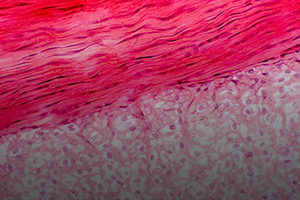Regrowing Cartilage

According to recent research, scientists are looking at salamanders and zebrafish to develop possible treatments for osteoarthritis (OA) – a leading cause of disability worldwide. The goal is to use what we already know about the ability of these animals to regenerate limbs and apply it to human tissue repair.
OA is characterized by a degradation of the cartilage in the joints. Currently, once pain levels become severe, joint replacement is the only therapy available. But it was recently discovered that, contradictory to past belief, microRNA molecules similar to those used by salamanders for re-growing lost limbs are also present in humans (albeit to a much lesser degree).
Samples of human cartilage were examined using mass spectrometry, which allowed the researchers to determine the age of the proteins present. They noted that the proteins got progressively younger the further down the leg they went; in other words, the cartilage was renewing itself at a faster rate in the feet and ankles than in the hips. By identifying which microRNA molecules humans are lacking, they hope someday to slow the degradation process by boosting the production of these molecules in the joints. The next step will be to conduct experiments in animals to assess the viability of microRNA injections to slow the development of OA.
For information: Virginia Kraus, MD, PhD, Duke University School of Medicine, 300 N. Duke Street, Carmichael Building, Durham, NC 27701; phone: 919-681-6652; email: kraus004@duke.edu; Web site: https://duke.edu/ or https://advances.sciencemag.org/content/5/10/eaax3203